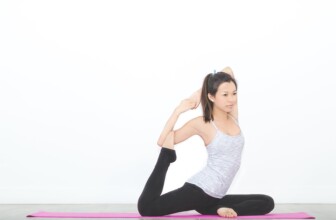Shielding Your Eyes: The Essential Guide to Blue Light Protection
1. Introduction to Blue Light
Blue light, a high-energy visible light, is emitted in large amounts by digital screens such as smartphones, tablets, and computers. Its exposure has increased significantly in our daily lives, leading to growing concerns regarding its effects on eye health and overall well-being.
What Is Blue Light?
Blue light is part of the visible light spectrum, usually categorized with wavelengths between 380-500 nanometers. Natural sources of blue light include sunlight, while artificial sources include LED lights and digital screens. Given its prevalence in our modern society, understanding its potential effects is crucial.
2. Effects of Blue Light on Eye Health
Short-Term Effects
Common short-term effects of prolonged blue light exposure include:
- Digital Eye Strain: Symptoms include dryness, irritation, and difficulty focusing.
- Headaches: Many users report headaches after extensive screen time.
Long-Term Effects
Emerging studies suggest that prolonged exposure to blue light might have long-term consequences, including:
- Macular Degeneration: Blue light may contribute to the damage of retinal cells, leading to age-related macular degeneration.
- Sleep Disruption: Blue light interferes with the production of melatonin, disrupting natural sleep cycles.
3. Blue Light and Sleep Patterns
One of the most significant impacts of blue light is its effect on sleep. Exposure to blue light in the evening can interfere with the body's circadian rhythm, making it more difficult to fall asleep and stay asleep.
Case Study: Effects of Blue Light on Sleep
A 2019 study conducted on college students showed that those who used electronic devices before bed reported significantly lower sleep quality than those who engaged in non-screen activities.
4. Protecting Yourself from Blue Light
1. Use Blue Light Filtering Glasses
Blue light-blocking glasses can significantly reduce exposure. They work by filtering out a certain percentage of blue light wavelengths, ideally suited for those who spend extensive time in front of screens.
2. Adjust Screen Settings
Modern devices often come with night mode or blue light reduction features that can be activated to minimize blue light emission.
3. Follow the 20-20-20 Rule
A simple rule that suggests looking at something 20 feet away for 20 seconds every 20 minutes of screen time to alleviate digital eye strain.
4. Promote Natural Lighting
Maximizing exposure to natural light during the day promotes a healthier circadian rhythm and reduces reliance on artificial light sources.
5. Real-Life Examples of Blue Light Protection
Case Study: A Corporate Office Implementation
A corporate office implemented blue light blocking screens and encouraged employees to adopt blue light glasses after noting a substantial increase in employee complaints about headaches and sleep disturbances. Post-implementation surveys demonstrated a 30% improvement in reported well-being and productivity.
6. Frequently Asked Questions (FAQs)
What Are the Symptoms of Blue Light Exposure?
Common symptoms associated with blue light exposure include eye strain, headaches, blurred vision, and sleep disruption.
Do All Screens Emit Blue Light?
Yes, all digital screens emit blue light, but the intensity varies among devices.
Are Blue Light Glasses Effective?
Many users report relief from eye strain and improved sleep quality when using blue light glasses, though scientific evidence is still emerging.
Can I Rely on Natural Light to Protect Against Blue Light?
Natural light helps, but it is essential to be proactive about reducing blue light exposure from artificial sources, especially in the evening.
7. Resources for Further Learning
| Source | Description | Link |
|---|---|---|
| American Optometric Association | Guidance on digital eye strain and blue light exposure. | Visit AOA |
| Harvard Health | Research on blue light and its effects on sleep. | Visit Harvard Health |
| National Eye Institute | Information on eye health and preventive measures. | Visit NEI |
| Blue Light Blocking Glasses | Products and reviews of blue light filtering glasses. | Visit the site |
8. Conclusion
Understanding blue light and its implications for eye health is increasingly crucial as screen time escalates. By adopting protective measures such as blue light glasses, monitoring screen usage, and making adjustments to living environments, individuals can significantly reduce their risk of adverse effects. As research continues, future trends in blue light protection could include advancements in screen technology and more personalized eye care solutions based on individual exposure levels.
Disclaimer
This article is for informational purposes only and should not be considered a substitute for professional medical advice. Always consult with a healthcare provider for personal recommendations regarding eye health and protective measures.










